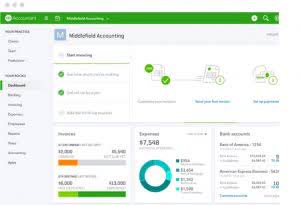
Unlike cash accounting, accrual accounting methods like PCM better reflect the economic reality of long-term projects since accrual-based reporting matches revenues with related expenses. According to the IRS, only construction businesses with less than a set average annual revenue can use the cash basis method for tax purposes. If a business’ sales exceed that amount, they’ll have to use another method for tax purposes. In that case, they may decide simply to use another method for their own books as well. Job costing tracks expenses on a per-project basis, offering a granular view of where costs are incurred. This approach is essential in construction, where each project has unique budgets, timelines, what are retained earnings and resource requirements.
Improve Job Costing
In construction, this ratio is particularly important because it affects your bonding capacity and ability to secure financing for new projects. You might also want to prepare supplementary schedules that show profitability by project type, size, or location to help guide your future bidding and business development strategies. You might also have significant long-term liabilities related to equipment financing or property investments that need proper categorization and tracking. Your reporting system must track essential information like employee classifications, work locations, hours worked, and benefits paid. You might receive a portion when you achieve substantial completion, with the remainder released after the owner’s final acceptance of the project and the expiration of any warranty periods. For example, if you bill $100,000 for completed work and the retainage rate is 10%, you’ll receive $90,000, while $10,000 goes into the retainage account.

Resources to support constructionCompanies & small businesses
Beyond these specific areas, you’ll also need to handle standard payroll functions like tax withholding, benefits administration, and overtime calculations. The key is developing systems that can efficiently manage all these requirements while maintaining accuracy and compliance. Managing payroll in construction accounting involves unique complexities that you won’t typically find in other industries.
Business Tax

Many construction company owners struggle to master the unique complexities of their industry, from tracking project-based expenses to managing long-term contracts. Economic and political decisions can have serious consequences AI in Accounting on the construction industry. Factors like the price of equipment, labour and materials can change quickly. NerdWallet independently reviews construction accounting software products before determining our top picks. We collect the data for our software ratings from products’ public-facing websites and from company representatives.
One of these is that revenues are earned either by various projects or contracts with a long timespan. These situations can make it difficult to decide when revenues should be recognized. Remember, proper bookkeeping practices are not just about managing your finances; they are also crucial for improving operational efficiency and reducing costs. By following the guidelines outlined in this comprehensive guide, you can ensure that your construction company is on the right track towards long-term success.
This helps you create accurate invoices for your clients, as well as identify inefficiencies or inaccurate estimates. The project management module also offers effective resource tracking tools to balance workloads and optimize labor costs. Easily see each crew member’s weekly or monthly schedule to ensure there’s no over or under-staffing.
The 7 Best Construction Accounting Software for Construction Companies in 2025
- Get real-time insights into every pay app, waiver, and change order—all in one place.
- You can create invoices, take payments online, and set a basic budget, but that’s it.
- The platform manages the request through the documentation provided by vendors.
- Often business owners start by paying company costs from their own accounts.
- Rated by Forbes Advisor as the best overall construction accounting software in 2023, Jonas Premier makes it easy for teams to manage multiple projects simultaneously—from start to finish.
Premier provides you with a customizable dashboard that gives you the insights you need to manage every aspect of the job. Record electronic signatures for approvals and use the cloud-based bookkeeping for small construction business document storage tool to keep everything you need one click away. Join over 1 million businesses scanning & organizing receipts, creating expense reports and more—with Shoeboxed. Turn your receipts into data and deductibles with our expense reports that include IRS-accepted receipt images.
What are the two accounting methods utilized most frequently in the construction industry?

Plus, you’ll have all the tools you need to stay on top of your construction accounting and make smarter financial decisions. This will make it easy for you to send invoices online, track expenses, monitor payment status, generate financial reports, and more. Many construction companies use a “completion percentage” approach, meaning they calculate estimated taxes based on quarterly income and expense reports. Compliance reporting is another key requirement for construction companies. This involves reporting compliance to federal, state, and/or local agencies, and covers many regulatory requirements, including tax filing rules, labor laws, and various safety regulations.
